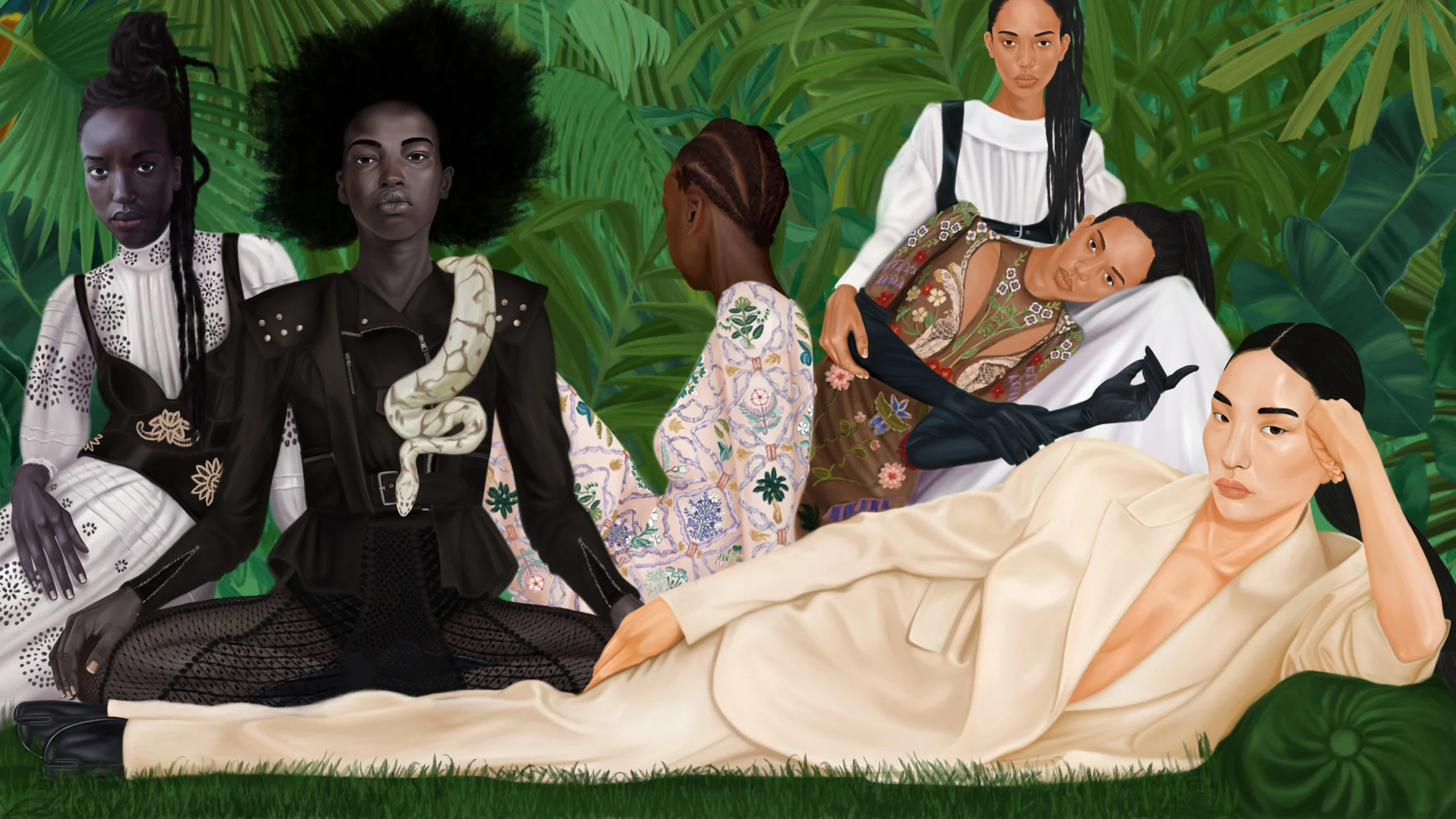
Being raised in a small Colombian city and attending a strict Catholic school there, painter Stefania Tejada’s view of womanhood was limited growing up. Now living in Paris and inspired by the pages of Vogue and the approaches of her favorite fashion designers, she’s painting a legion of powerful women with the world at their feet. Surrounded by nature and often staring back at the viewer, her subjects are intended to send a message that women can escape the limitations placed on them if they get to know and understand their true selves. Stefania tells Alix-Rose Cowie how, since she developed an understanding of what women could be, she’s felt the need to create a transcendent image for others to look up to.
While studying fashion design at university in Bogotá, Stefania Tejada had a friend who was obsessed with Alexander McQueen. This sparked her own curiosity, and researching further, she found a quote by the British designer which she’s never forgotten: “I want people to be afraid of the women I dress.” “It gave me a new vision of what a woman could be,” she says. “A woman can be powerful, or aggressive.” Now, as an artist based in Paris, she paints women in their full power, dressed in armour of silk and satin by the finest fashion houses – Alexander McQueen included.

Growing up in the small city of Tuluá in Colombia, Stefania went to a restrictive Catholic school run by nuns. “You couldn't be yourself,” she says, “You had to wear this pristine uniform. You couldn't color your hair or paint your nails. We all had to look the same.” The choices she’d have as a grown woman there also seemed to be limited. She wanted to know what was happening beyond her town. The only international magazine on the shelves in her local grocery store was Vogue. When she’d successfully sneak it into her parents’ shopping cart, it became her window to the world, and fashion would become her ticket out of town.
Studying in the capital city and later in Mexico, surrounded by peers from different places, she gradually let go of the traditional views on womanhood that were fed to her growing up, and started to realise the infinite possibilities for her life. She needed inspiring women to look up to, so she started painting them. “This reference didn't exist in my life, so I saw the possibility of creating these women, these Amazons who could remind us who we really are, who can show us how powerful and spiritual we can be,” she says.
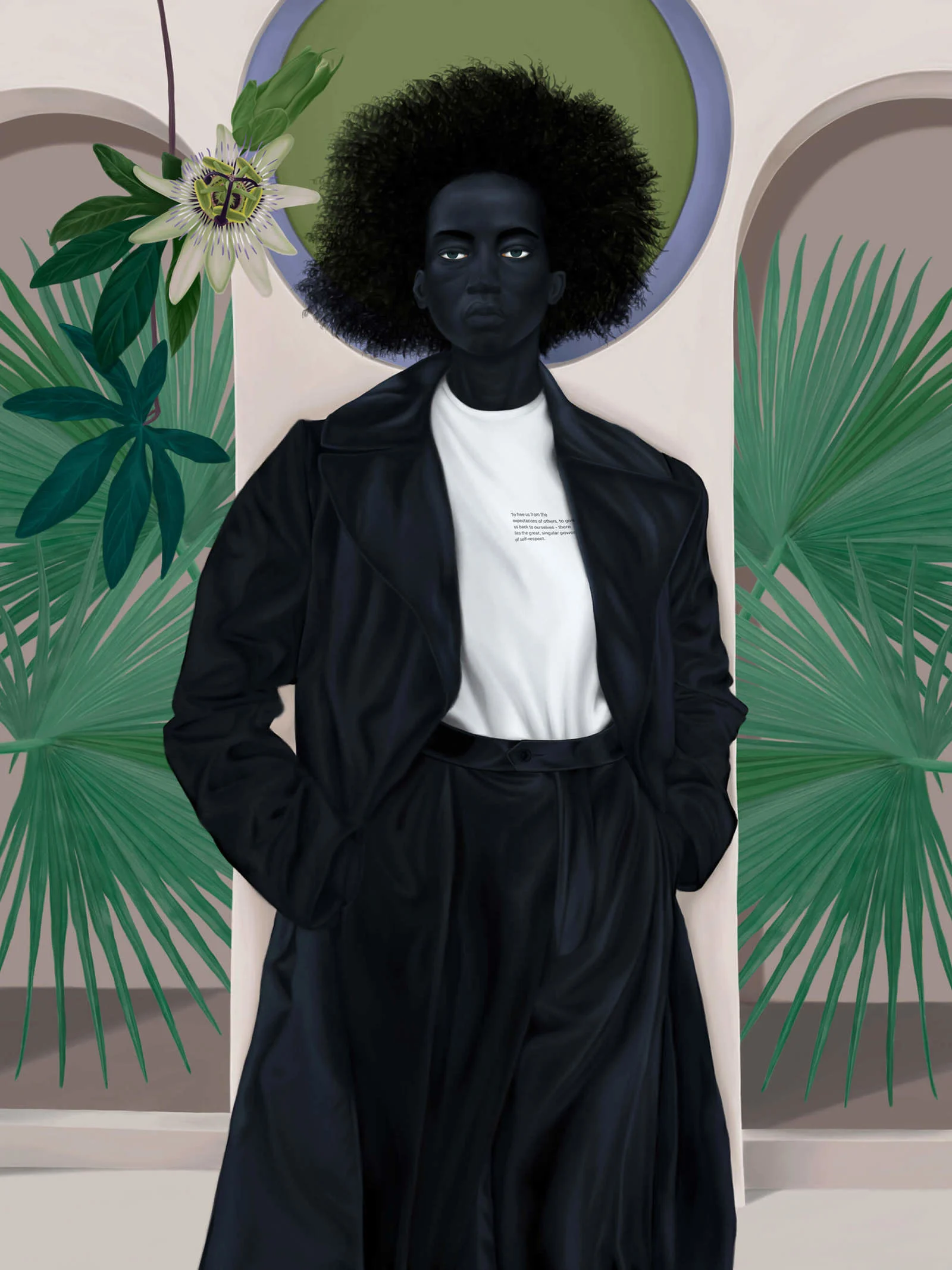
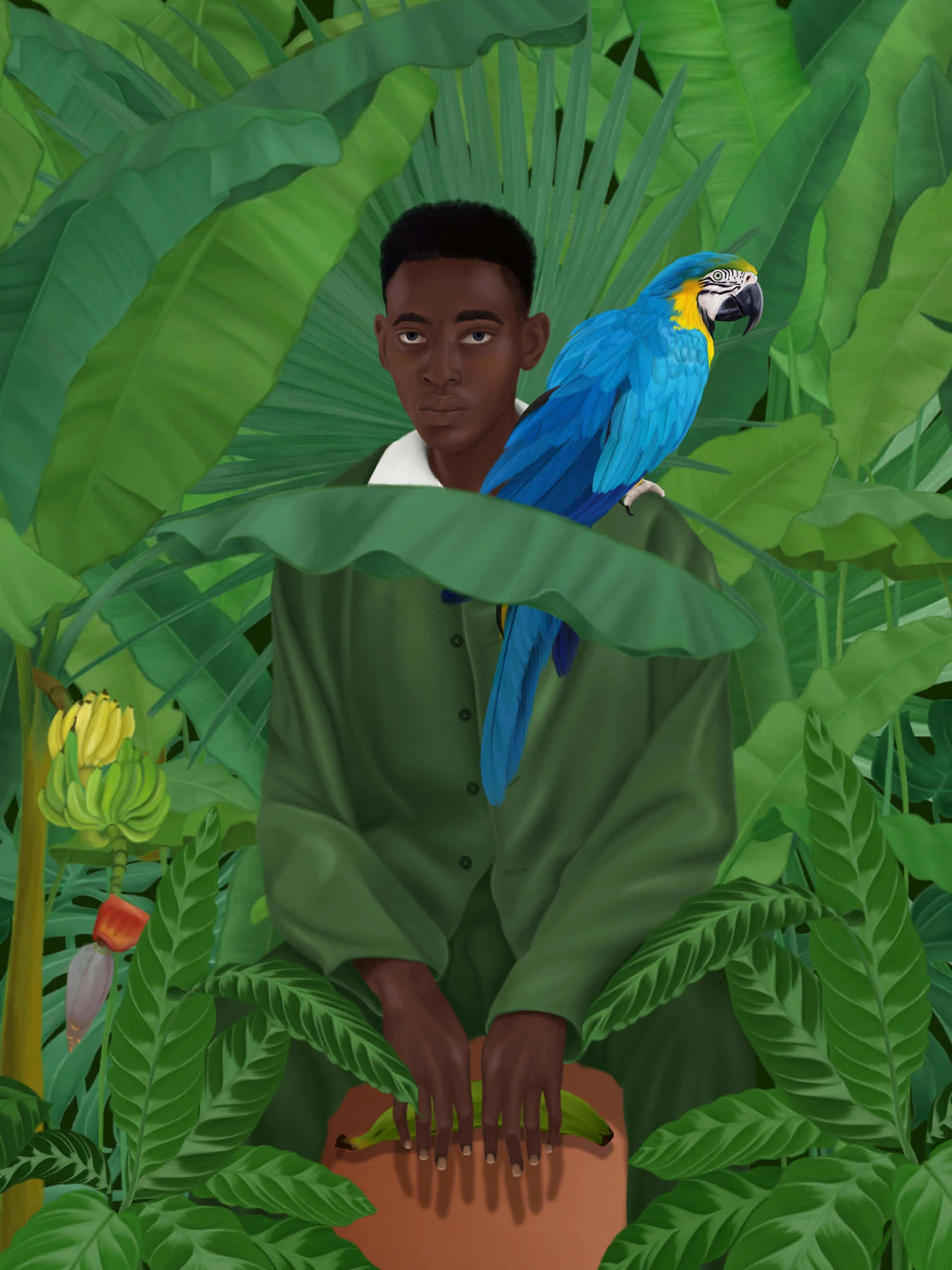
Her work started resonating with other women, and she was soon recognized by the feminist publication Lenny Letter in New York, founded by Lena Dunham and Jenni Konner. She illustrated an article about Kesha for them after the singer shared her experience of sexual assault. The article and image was re-posted by celebrities like Anne Hathaway and Reese Witherspoon, and led to more commissions for Stefania, and an opportunity to work on Michelle Obama’s United State of Women project. Whatever opportunity came up next, she grabbed it no matter the deadline. Her work continues to center women, now for brands like Cartier, Nike and Netflix.
When Stefania starts a painting she always begins with the face, with a particular focus on the eyes. Her women always stare back. It’s something that ties back to her first exposure to art as a child, sitting on the staircase in her grandmother’s house staring at the women in Fernando Botero prints who always reciprocated her gaze. “I’d try to figure out what they were trying to tell me,” she says. Her first question now is always what her subjects have to say.
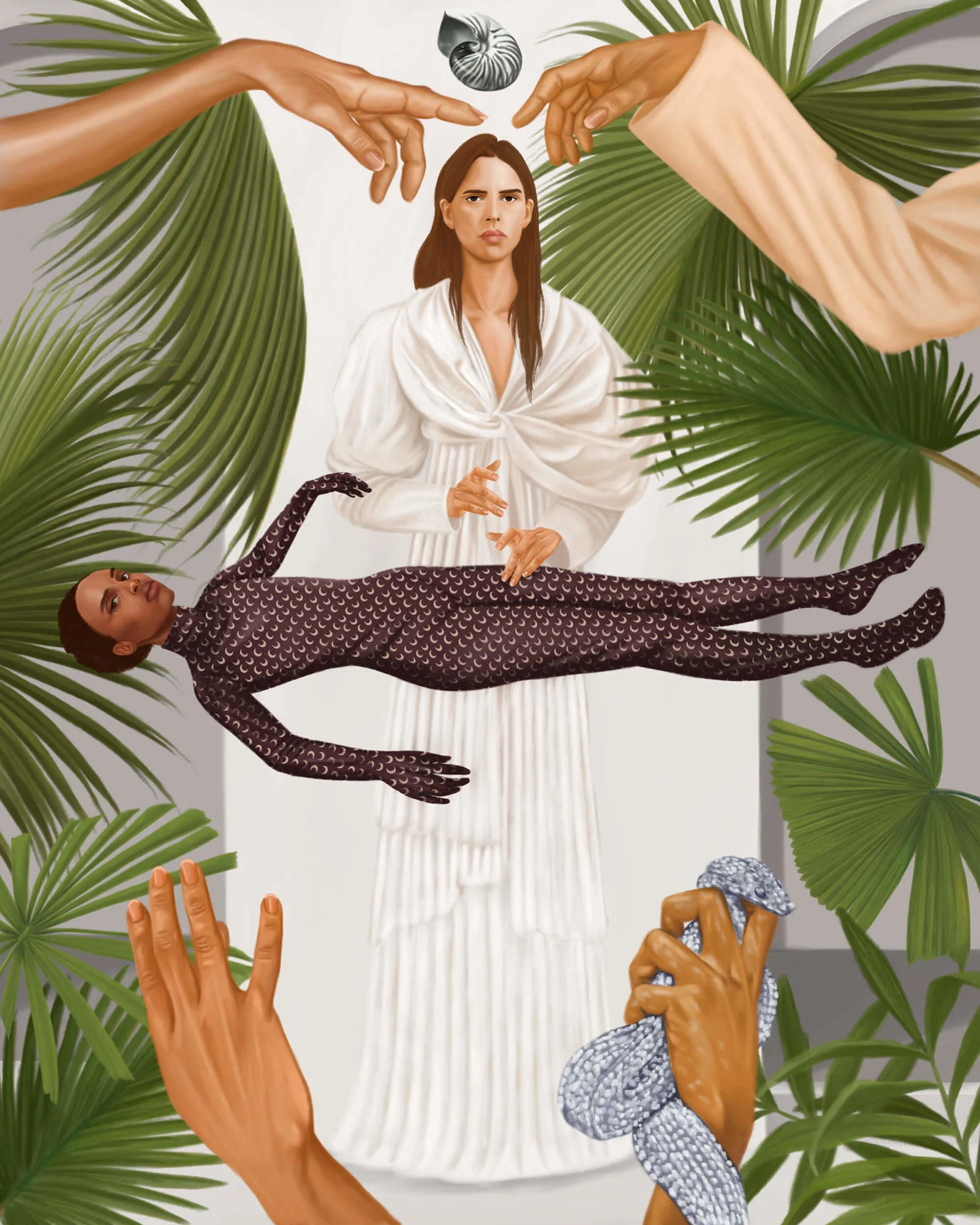
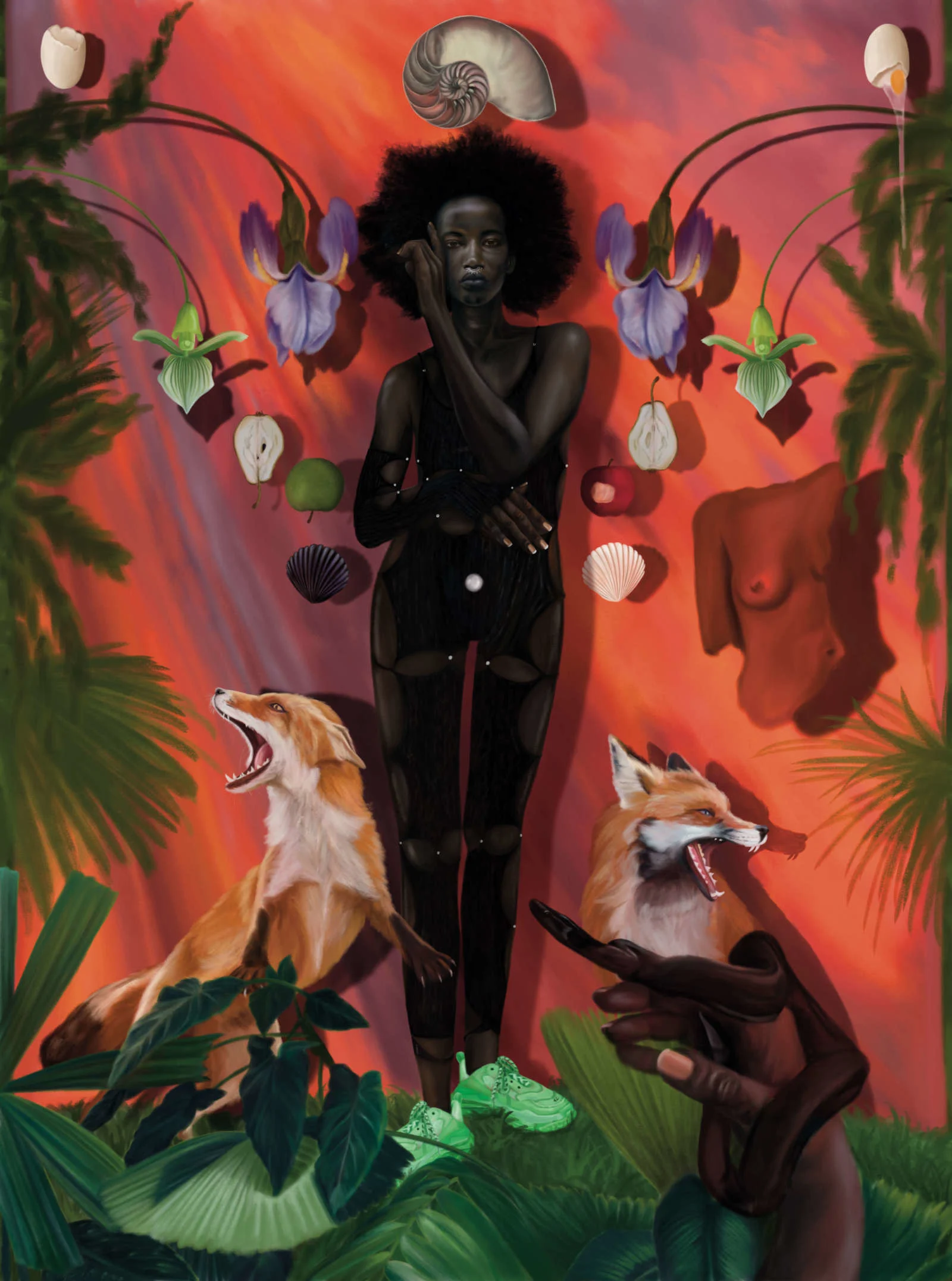
It’s easy to think of traditions as the way things have always been, but they’ve been constructed along the way, often with a patriarchal or religious agenda. Eve, the apple and the snake have recurring roles in Stefania’s work. But in her versions, women aren’t to blame for a fall from grace, but rather hold the key to an awakening from ignorance.
Stefania wants women to be liberated from so-called traditional roles and conditioning. “Under the pressure of society telling us how to dress and what to be, I think we lost ourselves a long time ago, and I think the only way to completely wake up is to go back, reconnect to our wild selves and find our way as a woman.”

Stefania’s subjects are reminders about going back to our origins, our essential beings, to get to know ourselves. She paints women surrounded by nature in their own personal Eden – lush vegetation and tropical flowers that symbolize female reproductive organs. “I try to create what the world could be if we just embrace the mother,” she says. “Without women there is no life.” These tropical vistas are also inspired by the natural abundance of her home country that she longs for.
On her annual return to her parents’ home in the mountains, she’s met with an orchestra of wind through the palm trees, birds and butterflies. “The colors are so vibrant and saturated and it looks like nothing else,” she says. Natural elements like orchids, sea shells, fruit and snakes make up her rich language of symbols. The recurring hands in her paintings are the hands of goddesses watching over us.
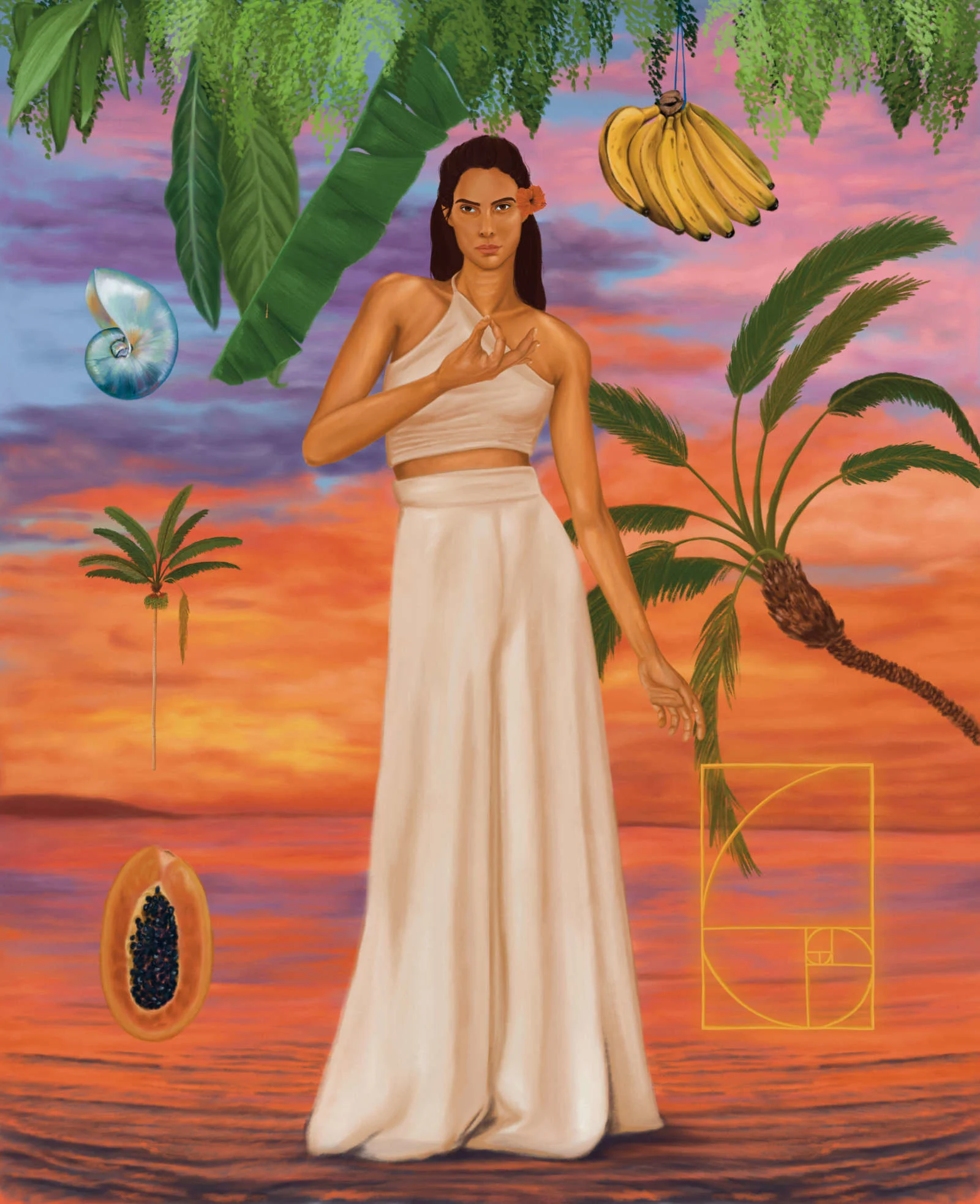

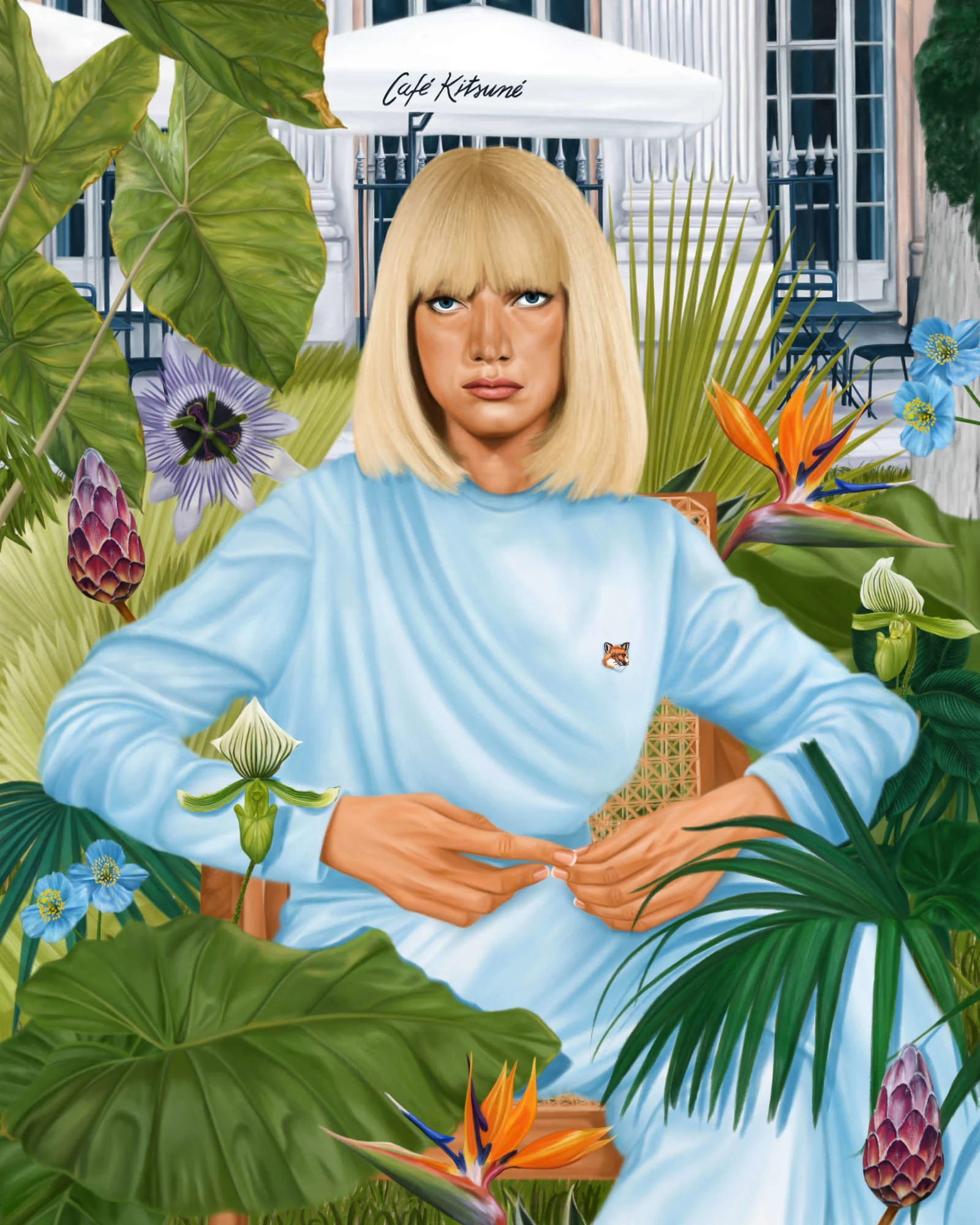
Beyond a floral print, Stefania thinks fashion has a place in her gardens more than ever. Considering climate change, and the fashion industry being one of the biggest polluters, she hopes to reach an audience that cares about both nature and fashion – enough to make changes for them to co-exist sustainably.
In a commission Stefania did for Marie Claire, a group of women sit together against a luscious green backdrop of ferns. Eve is there in a black leather jacket and lace leggings with a python over her shoulder. In front, a beautiful woman reclines in the grass in an alabaster-white suit and black Tabi boots. Her eyes, naturally, fixed on the viewer. “For me,” Stefania says, “she’s what God looks like.”